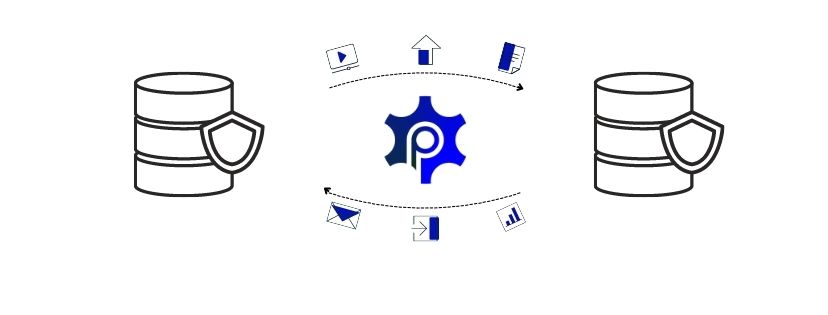The concept of IT migration is very popular nowadays and frequently used. Depending on the project, an IT migration could several types: data migration, application migration, operating system migration, or cloud migration. In this use case we are focusing on data migration.
Data migration involves moving data or software from one system to another. This process can be challenging and it is not always easy to transfer years of data in different spreadsheets within a company. A migration procedure could involve aspects like tracking processes or consolidating documents for centralised access. Thankfully, automation can help to simplify this process.
Automating data migration is useful when a data management process requires an upgrade to expand storage capacity, when you need to improve performance, add new capabilities for your database, reduce costs or manage efficiently, or when you want to enable application mobility and maintain control.
When a company provides this type of services for their clients for a particular type of software (e.g., migrate CRMs), it would be more efficient to configure the migration processes once and execute it for every client.
Planning data migration
This process can include several steps:
- Premigration planning: evaluation stage of the data that will be transferred
- Project initiation: identification of the most important stakeholders
- Analysis stage: elaboration of a data quality rules management process
- Designing the solution: establish what data will be moved, and the quality of you want to transfer
- Build & test: design the migration logic and test the procedure
- Execute & validate: ensure that the process of migration follows the established requirements
- Monitor: check the process

Example: A company that is growing in the Wellness & Fitness industry can face many problems like data storage, overwhelming data management, lack of features and high costs.
Solution: Data migration.
Why: Helps the company to manage better data, achieve better input, track evolution and integrate data more efficiently in the business.
How: Using an automation tool to transfer information from a database to another.
The process of data migration involves many aspects that you must consider before you starting this procedure, you need to protect your data, be sure you not lose important information, be aware of how data attracts other data to it as it grows, how can you customize in time your data or how you will integrate in your business.
